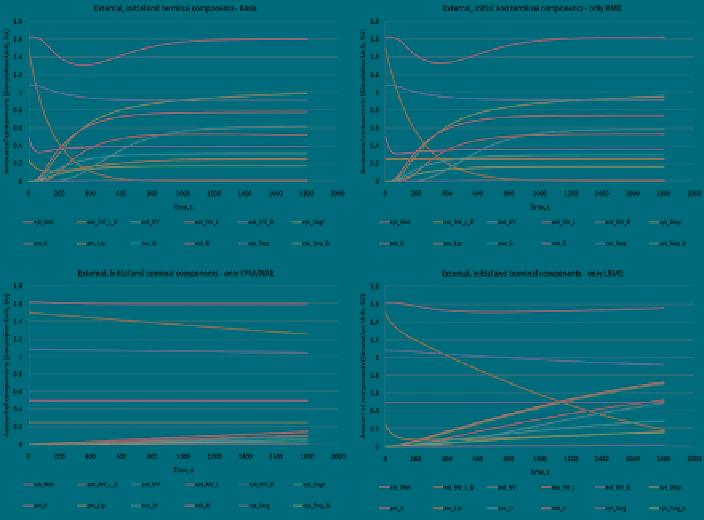Biomedical Engineering Reference
In-Depth Information
mechanism FPM/NAE alone: lower left diagram,
mechanism LRME alone: lower right diagram.
Please consider that the amount (ordinate) scale, is different for the four dia-
grams about the transient components.
Figure
8
shows that the dominant mechanism is the RME. We see clearly that the
major portion of delivery is carried with RME and LRME, while the percentage of
FPM/NAE is less (in this order). However, it is very interesting that the three mecha-
nisms together do not transport significantly more drug, than the receptor mediated
mechanism alone. It means that the transporting capability is limited (inside the cell).
Figure
9
shows, that in the case of FPM/NAE or LRME, only one or two com-
plexes take place in the delivery with a higher amount. The amount of exocytosis-
related components is almost the same for the complex and for the RME cases.
LRME and FPM/NAE mechanisms alone needs less amount of exocytosis related
components, of course. Change of the nanovehicle components is in accordance with
the above diagnosis. The receptor containing components are utilized only in the
RME and complex cases. The very low concentrations, appearing in the FPM/NAE
and LRME schemes are caused by the equilibrium character of the reactions and
transports, which can produce a small amount of these complexes “backwards” (simi-
lar situation might appear in various biosystems). It is interesting that LRME alone
can utilize more lipid rafts related resources, than the three mechanisms together.
Fig. 8
External, initial and terminal components in the complete model and in the individual
mechanisms

Search WWH ::

Custom Search